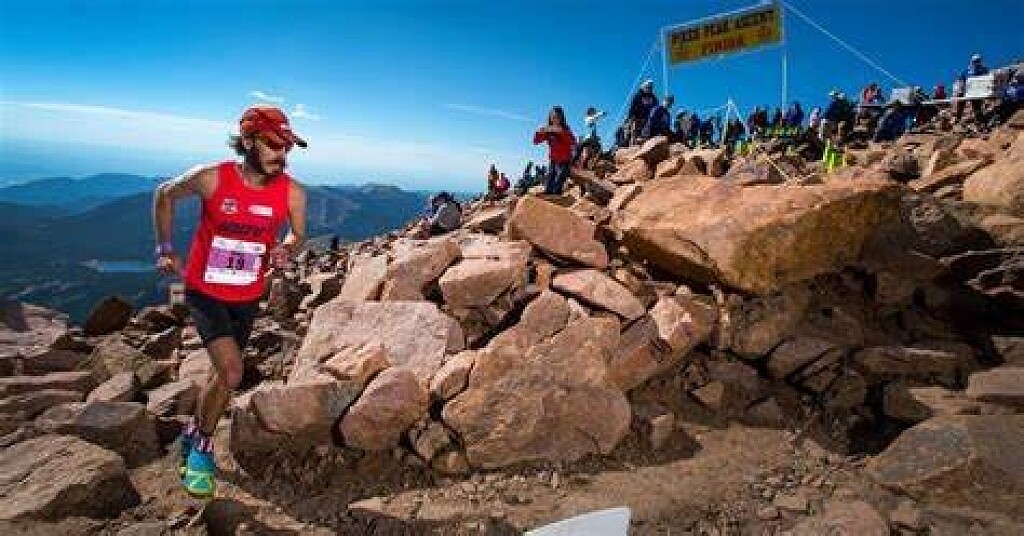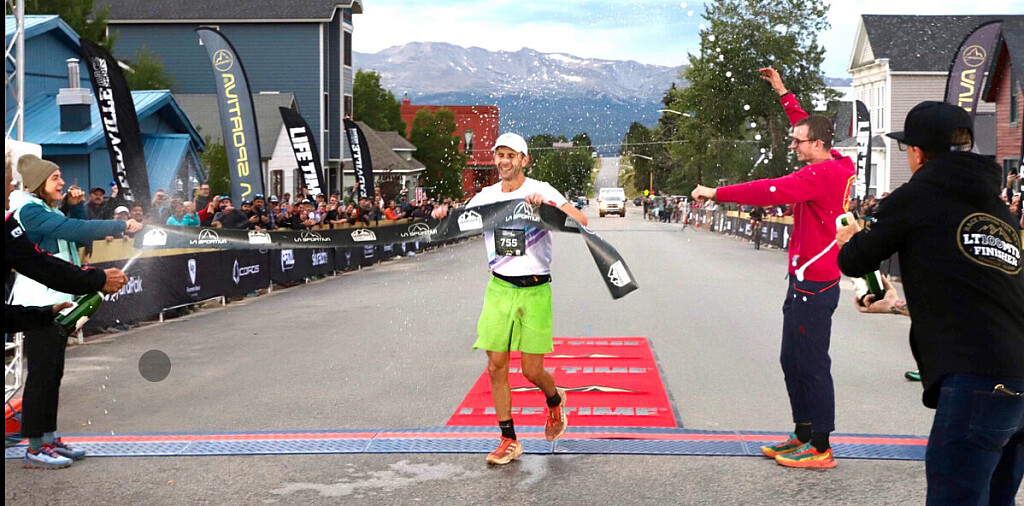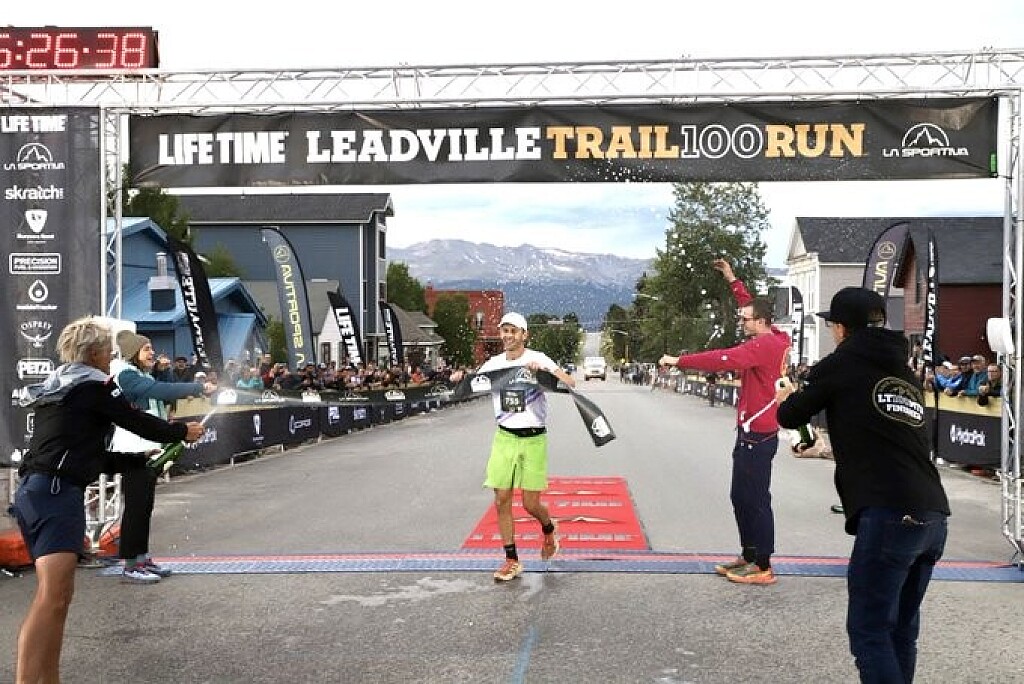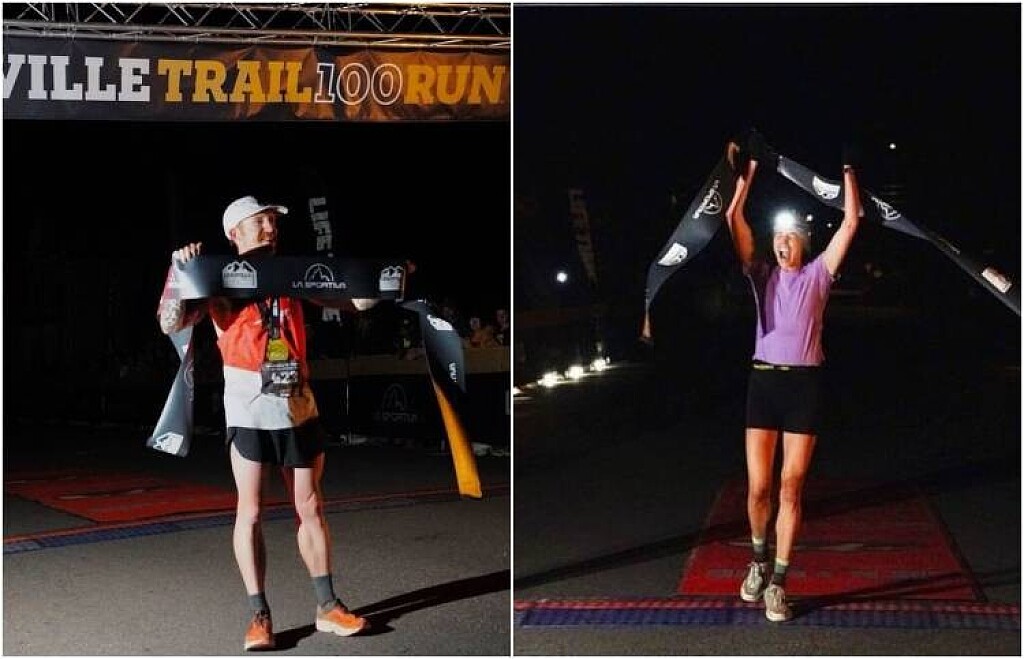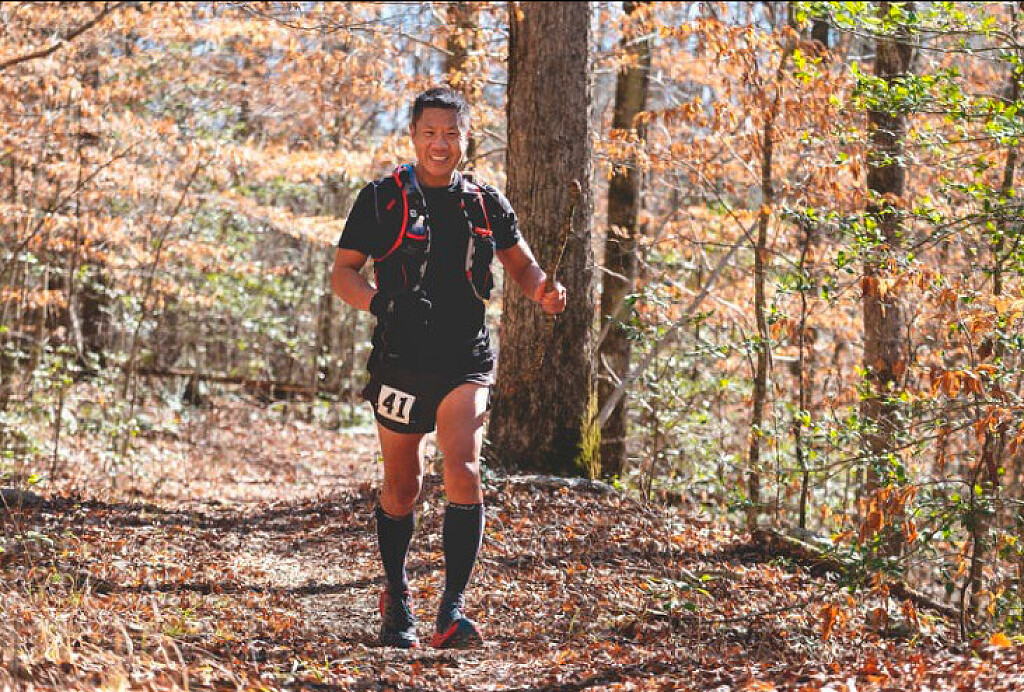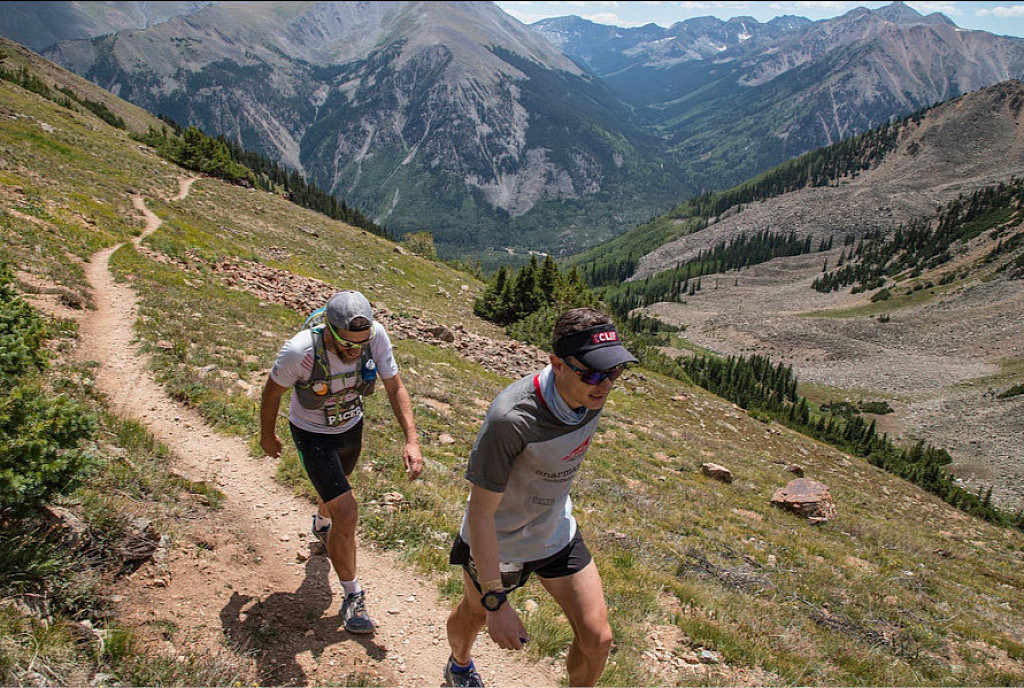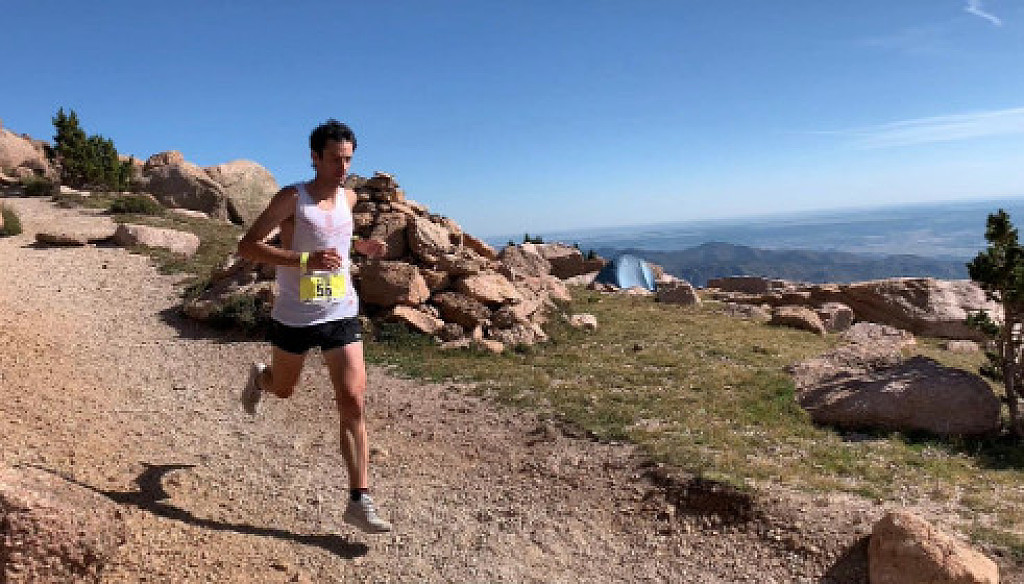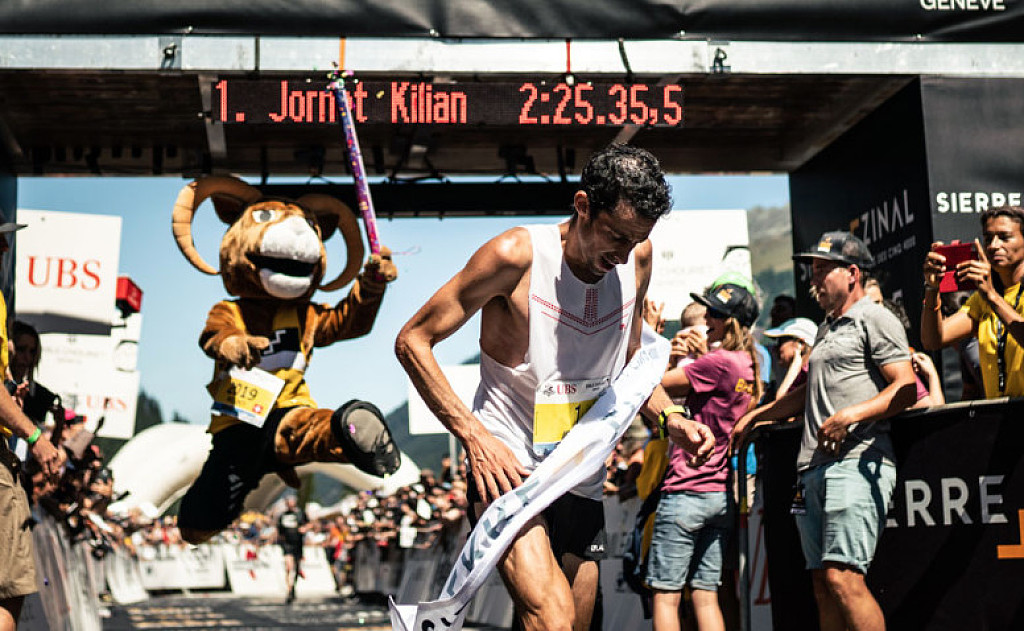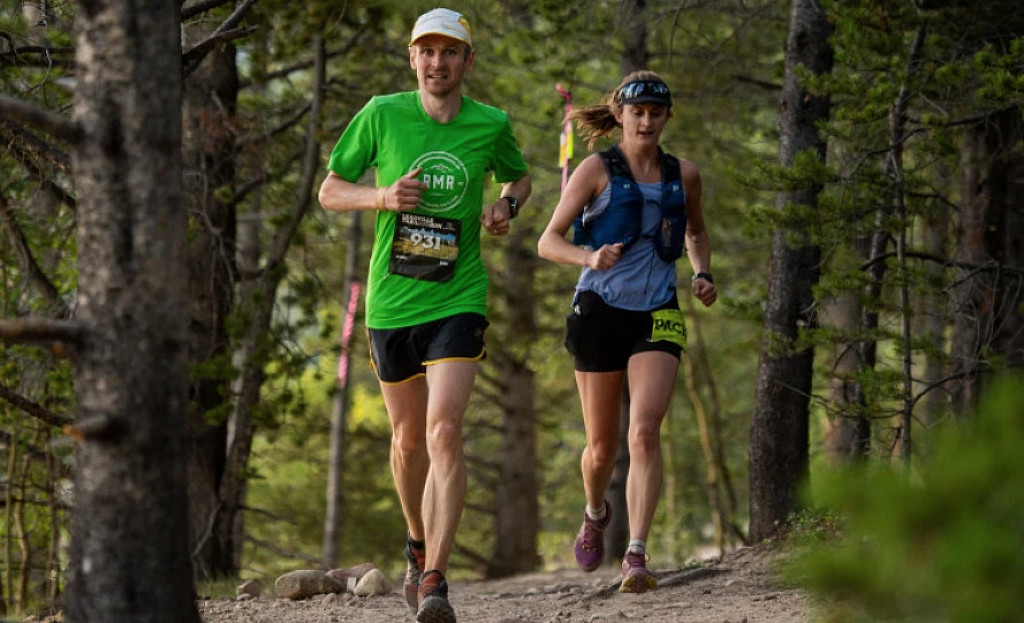Running News Daily
Running News Daily is edited by Bob Anderson. Send your news items to bob@mybestruns.com Advertising opportunities available. Train the Kenyan Way at KATA Kenya and Portugal owned and operated by Bob Anderson. Be sure to catch our movie A Long Run the movie KATA Running Camps and KATA Potato Farms - 31 now open in Kenya! https://kata.ke/
Index to Daily Posts · Sign Up For Updates · Run The World Feed
Articles tagged #Matt Carpenter
Today's Running News
Racers prepare for annual Pikes Peak Ascent, Marathon event
Take a deep breath while there’s time. Come this weekend, runners will have to cherish every bit of oxygen they can.
The 69th annual Pikes Peak Ascent and Marathon begin Saturday starting with the romp up Pikes Peak.
Both events have their highest number of participants since 2019 prior to the pandemic and a plethora of new runners will compete in this year’s festivities.
Here are a few items to keep tabs on during the annual event.
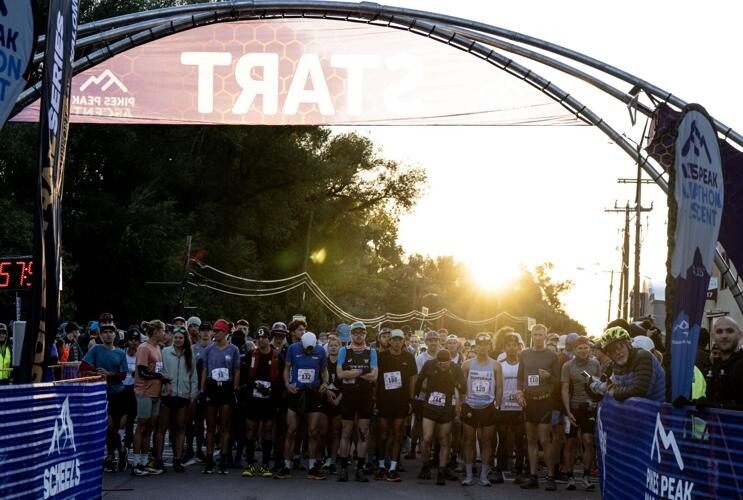
Weather
It’s doubtful inclement weather will impact this year’s Pikes Peak Ascent. Saturday’s race, which begins at 7 a.m., typically takes around 7 hours for the final finishers to arrive.
Jordan Linder, Pikes Peak Ascent and Marathon race director, said, “Saturday we’re a-go as normal” since snow is expected later in the day on Pikes Peak, but not during the early portion of the race.
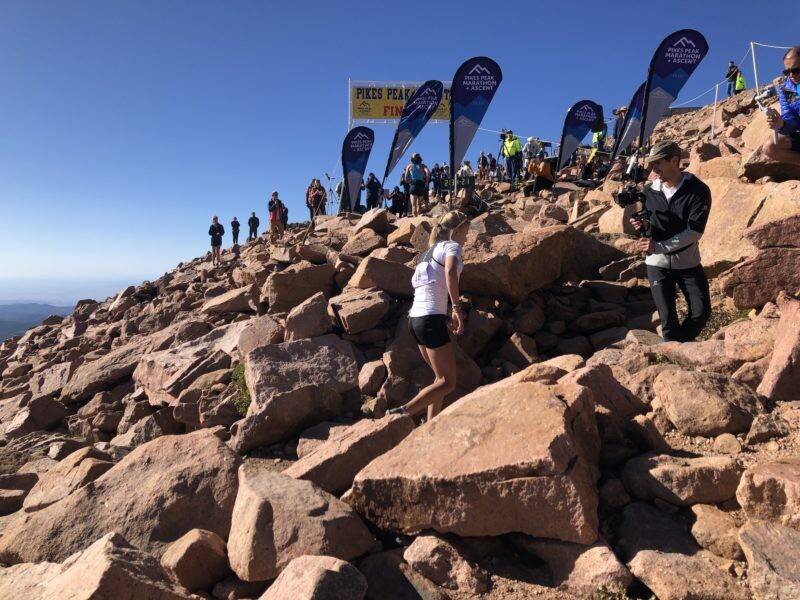
As for Sunday’s Marathon, stay tuned.
“We’re monitoring the weather for Saturday night into Sunday,” Linder said. “We’ll communicate that throughout the weekend for marathoners who may be affected. We’ll communicate that primarily through Facebook. We have Instagram as well and a text feature this year so we can text our registered runners up-to-date information.”
As of Thursday afternoon, Manitou Springs will have a low of 41 degrees and a high of 57 and a 50% chance of participation Sunday.
Participation
Nearly 2,000 runners will race in the Ascent and 916 will compete in the Marathon, which Linder said is the highest total of participants for both events since 2019, prior to the COVID-19 pandemic.
Last year, more than 1,450 racers competed in the Ascent while 673 ran the Marathon. In 2019, nearly 1,700 runners ran up Pikes Peak and 723 signed up for the Marathon.
Linder said they’re grateful to see numbers continue to increase post-pandemic.
“We’re grateful that the sport of running has continued to be at an all-time high and is increasing,” Linder said. “We’re seeing all kinds of different runners out on the trails. What’s most exciting is whether this is their first trail race or first mountain run, all of the runners are exceptional for being courageous enough to start.”
New Pikes Peak Ascent record? (Again?)
Maybe, but Linder said not likely.
Rémi Bonnet broke Matt Carpenter’s 30-year-old record last year and finished the Ascent in 2 hours and 20 seconds.
Bonnet will not participate in this year’s climb up Pikes Peak and in 2023, second place finished more than four minutes behind the Swiss runner.
“We had the luxury of watching the 30-year-old record be broken last year, so that’s probably not happening this year,” Linder said. “Obviously, it’s possible, but Rémi isn’t here to run it or break his record this year.”
Among the slew of runners are Joseph Gray and Seth DeMoor who, throughout the years, have constantly finished in proximity to one another.
In 2019, Gray won the Pikes Peak Ascent at 2:08.59 while DeMoor placed second at 2:12:45.
DeMoor won the Pikes Peak Marathon in back-to-back years from 2020 to 2021 and, in 2024, finished second overall.
During July’s Barr Trail Mountain Race, Gray clocked in at 1:33:10 and had a photo finish to edge out Jonathan Aziz, who won last year's Pikes Peak Marathon.
“You always want to come out and defend your title,” Gray said after his win at the Barr Trail Mountain Race. “It’s more special now being a master’s runner (40 and older) and competing with the young bucks and still being able to get some (wins.)”
by Marcus Hill
Login to leave a comment
Pike's Peak Marathon
A Journey to the Top and Perhaps Back The Pikes Peak Ascent® and Pikes Peak Marathon® will redefine what you call running. Sure, they start out like a lot of races on Any Street, USA. But your first left turn will have you turning in the direction of up! During the next 10 miles, as you gain almost 6,000...
more...In His First 100-Miler, David Roche Demolishes the Legendary Leadville 100 Course Record
Matt Carpenter’s record stood for 19 years.
In his first 100-mile race of his career, trail runner and coach David Roche took down a legendary record in the sport. On Saturday, the 36-year-old broke Matt Carpenter’s storied Leadville 100 course record from 2005, winning in 15:26:34—over a 16-minute improvement of the record.
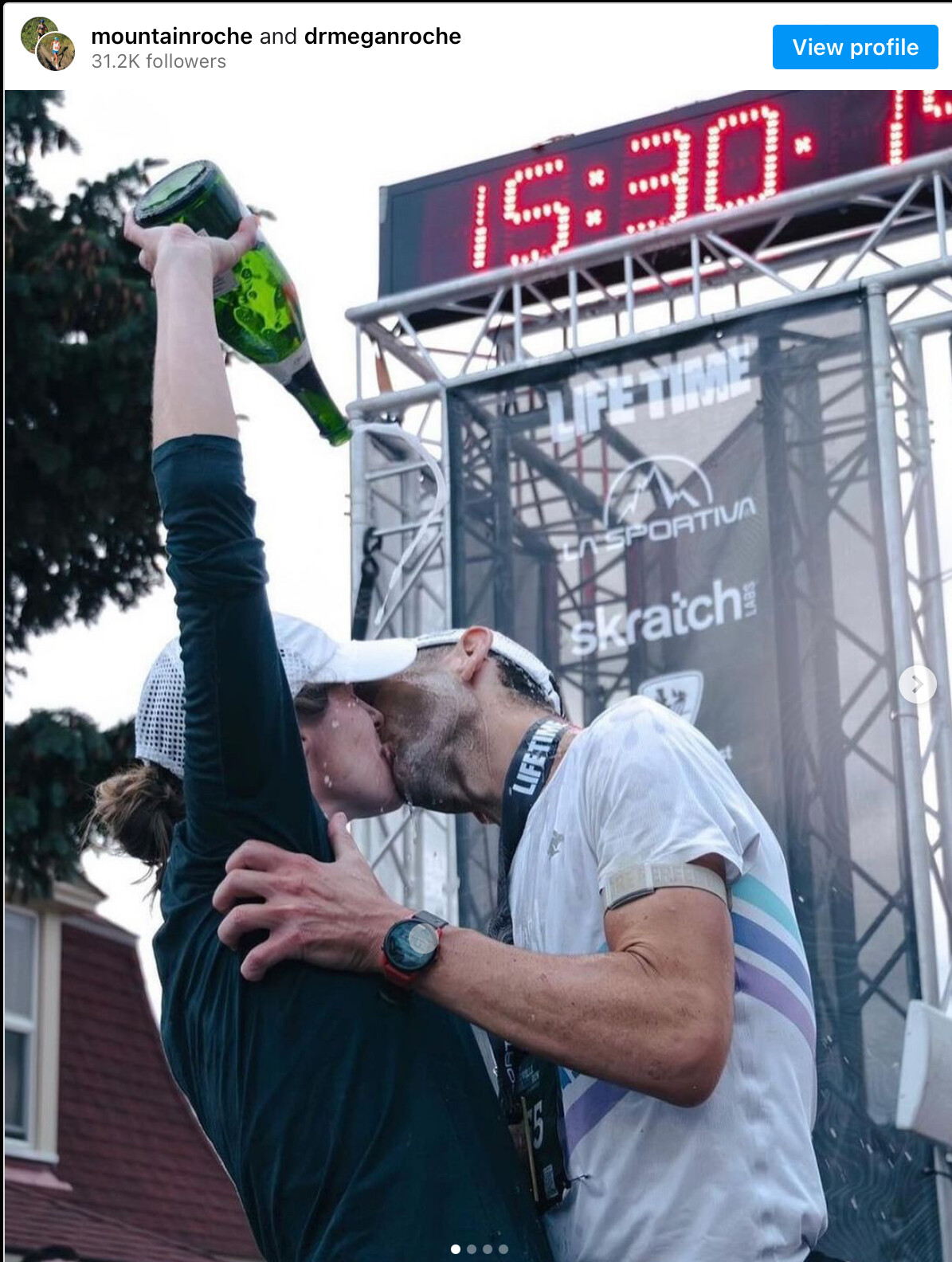
Roche won the men’s race by 30 minutes, on the dot. Adrian Macdonald was second in 15:56:34, and Ryan Montgomery placed third with a time of 16:09:40. In the women’s race Mary Denholm dominated, winning in 18:23:51. Zoë Rom took runner-up honors (21:27:41) while Julie Wright rounded out the podium in 21:48:57.
The Leadville course is notoriously difficult, primarily due to its situation at high altitude. The town of Leadville, Colorado—where the race starts and ends—sits at 10,119 feet above sea level. The “Race Across the Sky” covers more than 18,000 feet of vertical gain and at its highest point, runners reach an elevation of 12,600 feet. (For context, “high altitude” is generally considered to begin around 5,000 feet above sea level.)
Roche went out aggressively and built a sizable cushion on Carpenter’s record of 15:42:59. At the halfway mark, Roche was ahead of course-record pace by over 25 minutes, according to iRunFar. By the 87.4 mile split, the gap had decreased to 15 minutes, but it was enough of a buffer for Roche to maintain.
After the race, Roche posted on Instagram recapping the feat and noting some prerace nerves.
“I put a big scary goal out there early this year: chasing the historic 15:42 Leadville 100 course record by one of the GOATs, Matt Carpenter,” he wrote. “Approaching my first 100 miler, though, I’m not sure I truly believed. I kept joking about where I’d drop out and what my order would be at the Leadville Taco Bell.”
While Roche is an accomplished trail runner, he’s historically had the most success at shorter distances, like the half marathon and 50K. In 2014, he was named the 2014 USATF Sub-Ultra Trail Runner of the Year, and he’s represented Team USA internationally.
Roche, along with his wife, Megan, are well-known in the running community for their coaching business and podcast: Some Work, All Play (SWAP). According to its website, SWAP’s professional roster includes athletes like mountain running world champion Grayson Murphy, three-time Barkley Marathons finisher John Kelly, and steeplechaser/mountain runner Allie Ostrander.
Login to leave a comment
Leadville 100 sees long-standing course record fall
This year's edition of "the race across the sky" saw history-making performances on both the men's and women's sides
Leadville 100, known as the “race across the sky” for its stunning vistas as it traverses the Colorado Rockies, has been a staple in the ultrarunning community since its inception in 1983. This year’s event saw blistering performances in both the men’s and women’s races, with popular coach and author David Roche taking 16 minutes off the long-standing course record, and women’s race winner Mary Denholm recording the second-fastest time ever at the event.
The 100-mile race has runners climbing nearly 4,800 metres of elevation gain over rugged mountain trails, and runners begin and end in Leadville, Colo.
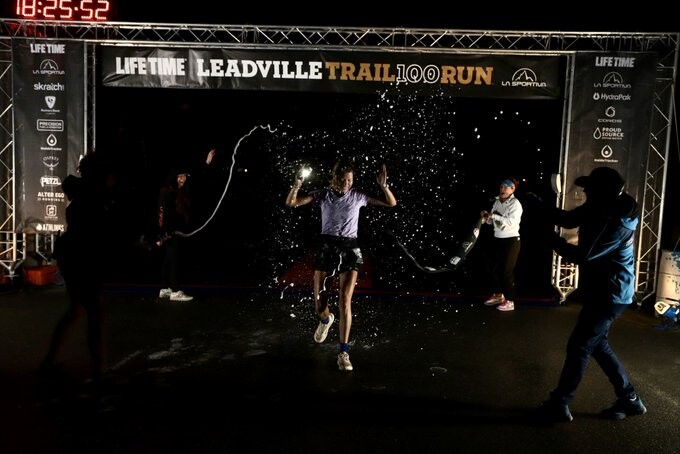
Women’s race
Denholm took off hot and dominated the competition from start to finish. By the halfway point, she had built an insurmountable 50-minute lead. She crossed the finish line in 18:23:51, securing the second-fastest time ever recorded for the women’s race, just short of legendary Ann Trason’s mark of 18:06:24, set in 1994. Denholm was followed by fellow American runners Zoe Rom in 21:27:41, and Julie Wright in 21:48:57.
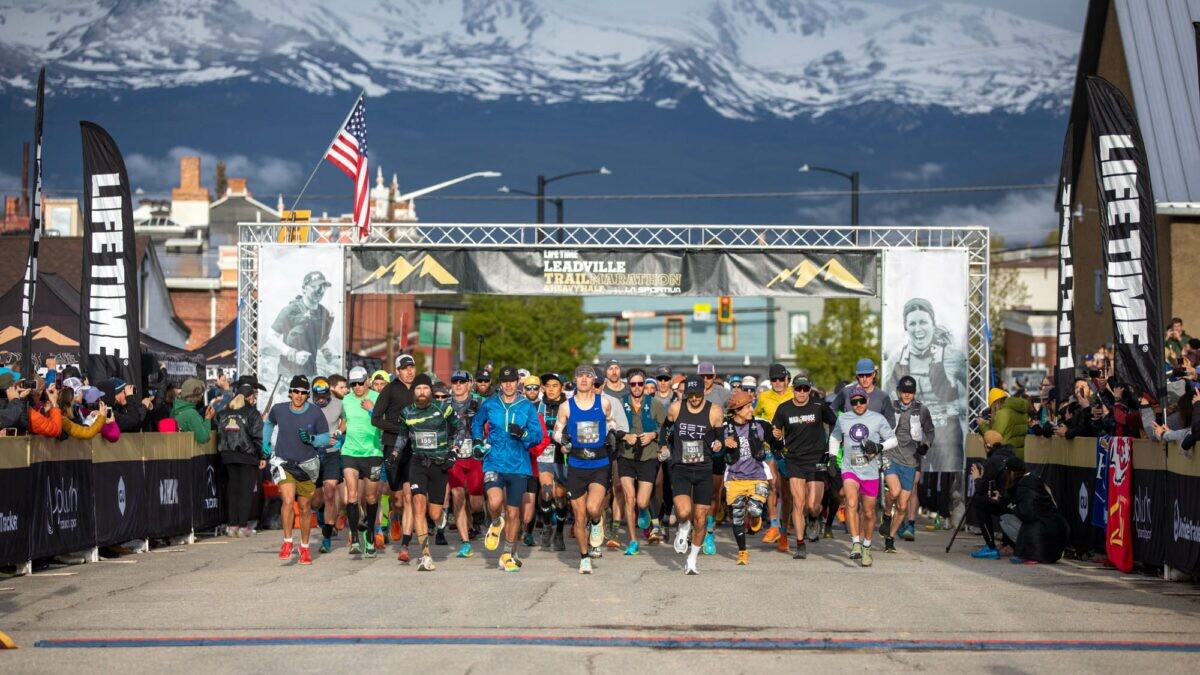
Alberta’s Ailsa MacDonald and Molly Hurford of Ontario were initially in contention for podium positions, but both faced challenges that saw them taking DNFs. Hurford left the race after suffering a badly sprained ankle, and MacDonald after dealing with unrelenting gut issues.
Men’s race
Like Denholm, Roche set a fast pace from the start and built on his lead throughout the race. His time of 15:26:34 took more than 16 minutes off the previous course record, set by Matt Carpenter in 2005. He was followed in by U.S. ultrarunners Adrian Macdonald in 15:56:34, and Ryan Montgomery in 16:09:40.
Pete Kostelnick, a well-known ultrarunner famous for completing the fastest transcon run of the U.S. in 2016 (42 days, six hours and 30 minutes), made a remarkable return to running earlier this year after recovering from a severe car accident that resulted in multiple pelvic fractures. In May, Kostelnick finished the Cocodona 250, followed by Badwater 135 only a few weeks ago; he finished Leadville 100 in 24:30:18.
Calgary’s Reiner Pauwwe took the 28th overall position (24th man) in 22:16:59.
by Keeley Milne
Login to leave a comment
Leadville Trail 100 Run
The legendary “Race Across The Sky” 100-mile run is where it all started back in 1983. This is it. The race where legends are created and limits are tested. One hundred miles of extreme Colorado Rockies terrain — from elevations of 9,200 to 12,600 feet. You will give the mountain respect, and earn respect from all. ...
more...Rémi Bonnet Breaks Longtime Pikes Peak Ascent Record
The Swiss runner scaled the 14,115-foot Colorado peak in just over two hours, taking down a 30-year-old record.
It was a record-breaking attempt 30 years in the making, but over the weekend, Matt Carpenter’s long-standing record for the fastest ascent up Pikes Peak was finally broken by Swiss runner Rémi Bonnet. The 28-year-old navigated the famous 14,115 peak in just 2:00:20, breaking Carpenter’s record of 2:01:06 from the 1993 Pikes Peak Marathon. Bonnet set the record at this year’s Pikes Peak Ascent on September 16. The 13.3 mile race set off in Manitou Springs, Colorado, with a grueling incline of 11 percent over the 7,800 feet to the summit. The last 3 miles were littered with snow (in addition to his running pursuits, Bonnet is also an accomplished ski mountaineer).Bonnet was the defending champion from the event, winning last year’s race in 2:07:02. He knew it would take a special day to unseat Carpenter, whose record was considered one of the toughest in the sport.
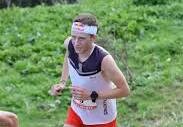
“I’m really pleased to have beaten this record! People thought it was impossible, but I did it, and I’m really proud to show who the world’s best climber is,” Bonnet told Run247. “Now I need to come back and go under the 2-hour barrier!”
Bonnet won the $3,000 first-place prize in this year’s Golden Trail World Series race but failed to get the $10,000 time bonus for finishing under two hours—though toppling the record is probably a grand consolation prize.Bonnet has made a name for himself in recent years for uphill running, re-setting his own fastest time on the Manitou Springs Incline, a 2,000-foot climb, the week before his record-breaking run at Pikes Peak.
Patrick Kipngeno of Kenya, a two-time World Mountain Running Championships Uphill race winner, placed second with a time of 2:04:09, the third-best time on the course behind only Carpenter and now Bonnet. American Eli Hemming was third in the event with a time of 2:07:40 after placing fourth last year.
American Sophia Laukli won the women’s race in 2:35:54, followed by Judith Wyder (2:39:35) and Anna Gibson (2:43:59).
by Runner's World
Login to leave a comment
Jacquie Mannhard, JP Giblin take the honors at Leadville 100
Americans Jacquie Mannhard and JP Giblin took the spoils at the Leadville 100 with two exhilarating performances at the race in Colorado, USA. The pair dominated the women’s and men’s races respectively – each winning by a comfortable distance.
Mannhard completed the 100-mile out and back course in a time of 21:24:55, finishing almost two hours ahead of her nearest rival. Giblin, runner-up in 2022, crossed the line first overall in a time of 17:07:25, over 40 minutes ahead of Luke Paulson in second.
Both victors were some way off the course record times set by Matt Carpenter (2005, 15:42:59) and Ann Trason (1994, 18:06:24).
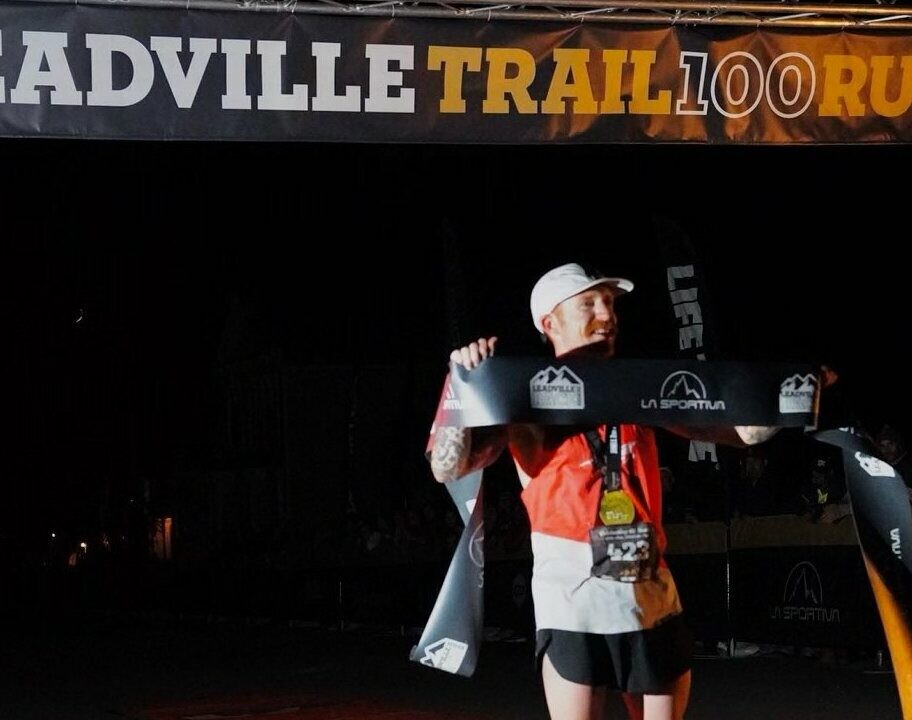
Magnificent Mannhard
The Boulder-based ultra runner, who is at home in the Colorado mountains having won the Kessel Run Ultra (60KM) in November, 2022, produced a strong performance to set a time of 21:24:55 – the slowest women’s time since 2010. Despite that fact, she was the class of the field taking the win by one hour, 51 minutes and 56 seconds.
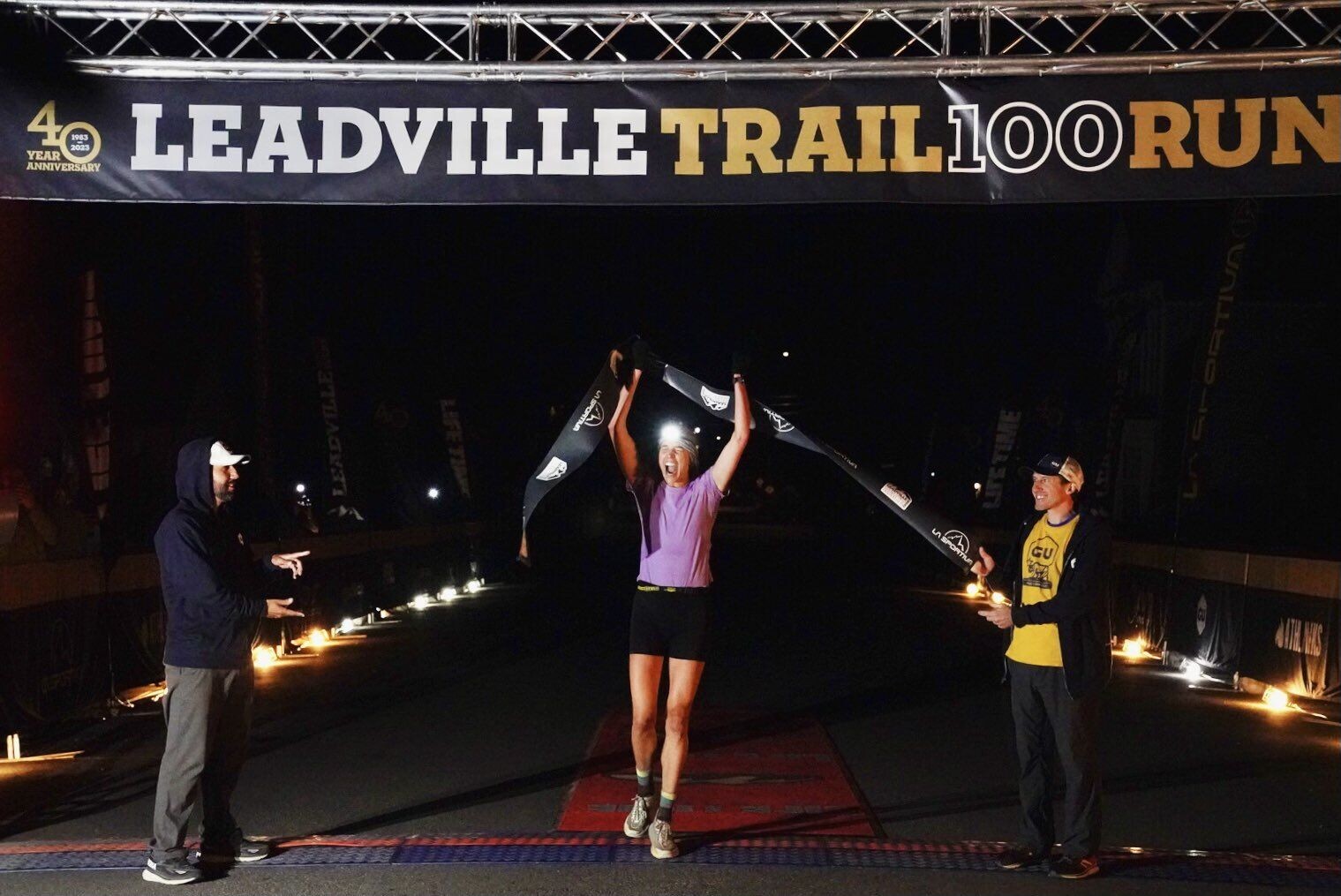
Second over the line was fellow American Lucie Haines. Haines had enjoyed a pair of victories in Colorado Spings in May and June winning the Valkyrie Trail Race (50K) and Ring the Springs (100K). But at Leadville she was unable to keep apace with Mannhard as she finished in a time of 23:16:51.
Canada’s Madeline Wighardt denied the Americans a clean sweep on the women’s and men’s podium by finishing third in a time of 23:32:57. The 22-year-old finished second in the Quebec Mega Trail (QC) 110K race in 2022 as she starts he fledgling career.
Colleen Noonan was next over the line – another who has enjoyed 2023 success in the state. The American won the North Fork 50 Mile/50K at Buffalo Creak and Chase the Moon 12-hour Solo. Noonan had to settle for bronze at Leadville, however, as she finished over two hours behind Mannhard in a time of 23:33:57. Carrie Stafford (23:48:50) was fifth over the line just under the 24-hour mark.
Glorious Giblin
Another Colorado-native took the victory in the men’s race as Giblin topped the podium. The 29-year-old, who finished 18th at Western States in June as well as second at Bandera 100K in January, finished in a time of 17:07:25.
He was followed over the line by Luke Paulson (17:47:55). The 31-year-old, who won the Yamacraw 50K in Kentucky in May, was 40 minutes and 30 seconds off the pace.
Scott Tarer was third over the line in a time of 17:54:12, just six minutes, 17 second further back. The 42-year-old won the Crown King Scramble 50K in May and finished 15th at Western States in June. He is a previous winner of the Javelina Jundred, the Hennepin Hundred and the Vermont 100.
Great Britain’s Ry Webb finished fourth in a time of 18:38:13 – an hour and a half behind the race winner. Webb has +800 rating on the UTMB Index won the 2021 Lakes in a Day 50 miler, Patrick Cabe (19:34:54) rounded off the top five.
by Stuart Dick
Login to leave a comment
Leadville Trail 100 Run
The legendary “Race Across The Sky” 100-mile run is where it all started back in 1983. This is it. The race where legends are created and limits are tested. One hundred miles of extreme Colorado Rockies terrain — from elevations of 9,200 to 12,600 feet. You will give the mountain respect, and earn respect from all. ...
more...The Joys of Small Local Races
But what it lacks in high-falutin' swag, it more than makes up for in community and character. While there are speedsters at the front of the pack, pushing each year to lower the course record (now a mind-boggling 4:07:48), some runners take well over nine to complete the course, marshaled by regional runners and the Ouachita Amateur Radio Association.
The race is capped at around 90 runners and remains small enough to fit all entrants in an annual start line group photo. The race is the destination, not a waypoint en route to some larger, shinier thing.

"I think that ABF has always been special because it is one of those events that feels like a big family reunion," says Stacey Shaver, who's been the race director for ABF for the past five years. "It's also just a cool corner of the state, where you can forget that modern (in)conveniences like smartphones and email exist for a few hours. We have runners come back year after year and from across several states. Even for runners new to our event, it feels like going to grandma's house. Grandma's house means fun, games, laughter, and leaving well fed. That is exactly what our runners get."
In addition to the homey feel of Grandma's house, the past few year's awards for first place finishers have included hand-harvested local honey, hand-soldered fork statuettes, and a charming cross-stitched winner's plaque.
Community Roots
As more races are becoming consolidated under increasingly large banners, company sponsors, and race series, many runners are looking to smaller, home-grown events with a family feel. Few things top the feeling of seeing friends and run family out along the course and feeling supported by your home community.
Runner Justin Grigg recommends Missoula, Montana's Double Dip race for just that reason.
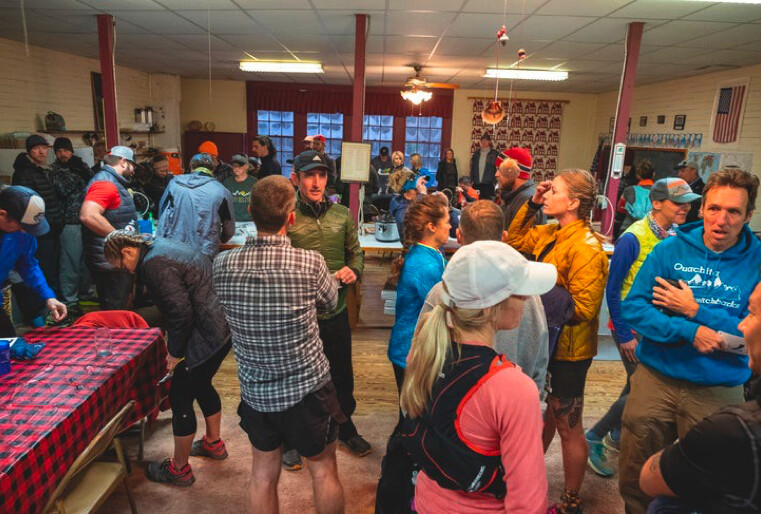
"You'll usually see friends racing, but also working aid stations, spectating along the course or gathered at the start/finish area. With the two out-and-back sections, you more than likely will see friends who are racing ahead of or behind you, and people who aren't racing will run up University and Sentinel to watch," says Grigg.
Many runners appreciate being able to share their race-day experience with the larger community and enjoy being cheered on while they're competing. Live music, food, and adult beverages don't hurt either when it comes to incentivizing community members to come and bask in the finish line stoke. Some events can almost feel at odds with the communities they happen in, and it's a breath of fresh air when everyone feels included in race day festivities.
Close to Home
The International Trail Running Association (ITRA) estimates there are around 3,600 trail races every year, and approximately 1,400 of those are in the U.S. While big events garner the most press and social media attention, there are hundreds, if not thousands of smaller, local races that are providing the bulk of opportunities for runners to lace up their shoes and hit the trails.
Aside from the accessibility, there are economic and environmental reasons that racing closer to home is more appealing.
Sam Robinson, from Oakland, California, loves the local Woodmonster Trail Race because it's practically in his backyard.
"I've run over every trail in the park numerous times. The main climb in the race is a spicy 0.9-mile ascent with a 14% grade-one of my favorite hills to run up in California. I know and love almost every inch of those trails and that makes the race joyous to me."
Traveling is a hassle. Trying to make sad hotel-room oatmeal in a tiny coffee maker from the 1990s at three a.m. before having a blow-out fight with my phone's GPS system to find the start line in the pitch dark of rural Nowhere is never fun. You know what's even better? Sleeping in your own bed, eating your own properly-cooked oatmeal, and navigating your own self to the start line.
Race locally. If not for the community or environmental plusses, then for the extra 20-90 minutes of sleep.
It's Not About Speed
"I love when a race director focuses more attention on the experience than the results of the race itself," says pro athlete Jeff Colt. "it makes the event fulfilling for the entire field instead of just some of the top runners. Jemez Mountain Trail Runs is another good example of this - instead of making grandiose prizes for the top three or some fancy sweatshirt included with registration. It makes the event fulfilling for the entire field instead of just some of the top runners." Colt's favorite small race is the Randolph Ramble, based in Randolph, New Hampshire.
Many RD's are subbing out swaggy grab bags filled with gear and gels no one wants with bespoke items and experiences instead. "The Jemez Mountain Runs offer breakfast before the race, amazing aid stations, a live band at the finish, and a full dinner after the race," says Colt.
Registration for the Ramble? Just $45. Many big ticket races cost hundreds of dollars to enter, before even forking over cash for housing and meals, making smaller, local races an affordable alternative. Washington State's Capitol Peak 50 only costs $50. At a dollar a mile, you'd be breaking even, even if you didn't have a lick of fun. Additionally, many smaller races like ABF invest in their home communities. Every cent raised at ABF goes directly to the Big Fork Community Center.
The community created by the races is important, too. While many larger races inspire buy-in from the community they happen in (I was recently blown away by the volunteers at the Western States Endurance Run, many of whom abandoned their weekend running plans to stand in a river or hand out flat coke), many volunteers at smaller races aren't trying to up their chances in a lottery or waitlist. They're simply there because they want to be. Whether it's operating a HAM radio or flipping pancakes at the finish, a race that's stacked with community-run aid stations feels extra special.
"I want to meet people at races and the ones that foster community are the ones that attract me the most. The Randolph Ramble welcomes runners in and makes them feel like a neighbor. I'd be surprised if you didn't end up with a new running buddy after running the Ramble," says Colt.
The worse the website the better the race.
The worse the website the better the race. For years, the race existed only as a Facebook page, with no website or online registration, a testament to the "if you build it they will come" spirit nascent in the true grassroots of trail running.
"At the Ramble, expect lumberjacks to be out there in their leather hiking boots, elite trail runners who prefer to stay out of the limelight, mountain wanderers who descend from above the clouds only to resupply for food and to run the Ramble, and other local north country neighbors who want a good morning workout," says Colt.
Race Director Doug Mayer (also a columnist for this magazine) says that the community feel is very much by design.
"We turn to our community for everything we need, from food courtesy of the local pub and cafe to handmade finisher awards. There's a strong sense of community and self-reliance in the White Mountains, so we're used to thinking this way. If you just stop and look for a moment, you'll discover all kinds of talents and services practically at your feet. And when the community is powering the event, almost by default it will have a great local vibe," says Mayer.
Are Small Races on the Rise?
"The big races grab the headlines, but under the surface, every day and all around the country, local trail runners are coming together to create authentic, unique, and wonderful events," says Mayer. "Most of us got our start that way. I'm deep in the world of marquee races now, but it's still true that nothing makes me happier than seeing 100 runners head up Mount Crescent at the start of every Ramble."
"Trail running as a whole is growing, and people who can't get into those events but still want the challenge of a mountain race will find that and much more at Athens Big Fork Trail Marathon but without the big race fees," says ABF RD, Stacey Shaver.
"We simply ask people to pay what they can. We don't want money to be the reason someone misses out on experiencing our races or feeling connected to the club and community. I also think it's really special to help people see the fantastic beauty that we have here in our backyard. I always feel such a sense of local pride when I see the beauty here, and I'm so grateful that we get to enjoy it in this special way."
Because local races are often directed by, well, locals, they can be more responsive and receptive to the community's needs, whether that's access or affordability. At ABF, it's not uncommon to see competitors hiking in full hunting get-ups. I've seen makeshift garbage bag ponchos, blue jeans, and an actual, hand-carved wooden hiking staff. And maximizing points of entry to the sport via affordable local events is a great way to grow the sport.
But what happens when races become victims of their own success? As a younger runner, sometimes it's hard not to feel nostalgic for a trail running world I never experienced but hear frequently about - one without waitlists or golden tickets, a utopic vision where you could register for marquee ultras day of, at the start line. The way these stories are passed down from my older trail buds, it seemed as though at every race you might see Scott Jurek flipping finish line pancakes, or that running Western States wasn't a matter of "if" but "when." It's hard not to pine for the trail running days of yore, even if they frequently involved non-technical fabrics and carrying your water in a Gatorade hockey bottle a la Matt Carpenter. It's not "Make Trail Running Great Again" nostalgia, but the ability to connect with the running community stripped of the pretenses of needing something flashier than the simple appeal to come and run.
Even so, I'm glad trail running is growing. And I'm glad it's getting more competitive. I'm especially glad that more folks every day might have the opportunity to race, wherever they are, and fall more in love with this wonderful, heart-breaking, silly sport.
Should I be more worried about people "discovering" my favorite local race? Will gushing about its unique charms be the very thing that causes it to become a big box event?
"I'm not worried about sharing how great this event is with a national publication, because the beauty of this event is that it can be recreated with little effort, and SHOULD BE recreated in your little pocket of the country," says Colt. "It's a local race, but it is a great example of what is needed to replicate this in your own backyard. You need an idea, a desire to gather some runners together, and maybe some local sponsors who dig what you're trying to doHave a fun, local event on the 10K of trails nearby your house and build that community where you are. We all have the tools to make something special."
There's nothing wrong with big races either. Getting to compete with the world's best athletes in amazing locations with well-trained aid station attendees is amazing - but it's no replacement for the local rotary club dishing out Fireball and pie on a 30-degree drizzly morning in the Ozarks.
Meanwhile, Back at Big Fork
I'll keep signing up for big races. I'll keep accepting swag bags full of expired lube samples and discount massage flyers. I'll keep setting alarms for the crack of dawn to register for races and I'll keep refreshing my browser to see if my name is moving up the waitlist.
But, I'll also still keep rolling up to the Big Fork Community Center on the second Saturday in January to subject my ligaments to the indifference of Ozark trails. I'll keep showing up to run a course that's only marked by comically sporadic blazes to get a result that will never show up on UltraSignup, or affect my ITRA score whatsoever.
I'll keep running ABF because I like that you can't upload the race to Strava for hours due to a lack of cell service. By the time you have enough bars to post a recap on Instagram, the urge to seek validation via screen has faded into a warm glow of post-run beer and real-life high fives.
I'll keep doing it because sometimes my legs and my heart need a reminder of why I trail run: not for accolades, recognition, or points, but for community and homemade chili. In lieu of a finishing chute, there's a chalk line etched onto the highway, a lone man clad in his warmest hunting wear with a clipboard marking down finishing times. Finish line IPAs and fresh biscuits are a bigger reward than any kudo, and time spent running in the woods with close friends will always be my favorite way to spend a Saturday.
here's no gun.
No timing mat. No official start line.
The Athens Big Fork Trail Marathon starts at the Big Fork Community Center, the barn-quilted hub of an unincorporated community in southern Arkansas boasting 179 residents, at last count. Nestled in the Polk County region of the Ouachita Mountains, the trail itself was constructed by the U. S. Postal Service 125 years ago along pre-established Choctaw and Caddo trade routes and game trails and was partially restored in 1986. Summits along the course, which boast (according to my GPS, though the thick foliage can fool even the highest of tech) almost 8,000 feet of climbing, are charmingly named Brushy, Big Tom, Brusheap, and Hurricane Knob. The average grade is 12%.
I was drawn to this race after reading about it in this very magazine, a story called The Toughest Trail Marathon You've Never Heard Of. After seeing how close this southern trail test-piece was to the Ozark hills, where I spent my childhood, I was drawn by the allure of something that felt comfortably familiar, and familiarly uncomfortable. There's a warning on the race's website meant to deter beginners. Below that, a secondary deterrent should the original warning have the opposite of its intended effect.
"Please do not be enticed into trying this run because of the difficulty warning-it is merely an honest attempt at preventing the run organizers from having to find and rescue someone ill-equipped for the event."
For the uninitiated, the trails of the southeast are punishingly steep and Dantean in nature - where the trail exists at all. For much of ABF (what locals lovingly call the marathon) the "trail" is in fact, a dried-out ol' crick. Mossy "baby-heads" (aptly named rolly-polly rocks approximately the size of a baby's head) and slick roots cackle at the futility of rubber outsoles and lugs. Forest Service literature euphemistically refers to it as "unsurfaced".
There's no entry fee. No timing chip. No YouTube stream.
Login to leave a comment
5 Things To Know About This Year's Leadville 100 Run
After being canceled in 2020 for the first time in its 39-year history, the Leadville Trail 100, a,.k.a., "The Race Across the Sky," returns Aug. 21-22 with the same rugged, mountainous spirit it has had since inception.
An eager field of 687 runners will toe the starting line in Leadville, Colorado, trying to survive the high-altitude, out-and-back course over 12,532-foot Hope Pass and back. There are a few minor changes this year - most notably the pre-race athlete meeting and the post-race awards ceremony will be held outside on the Lake County High School football field and no pacers or crew will be permitted at the 50-mile turnaround point at Winfield - but otherwise this fabled race born out of the hardrock miner vibe of the resilient 1880s mining town remains the same as it ever was.
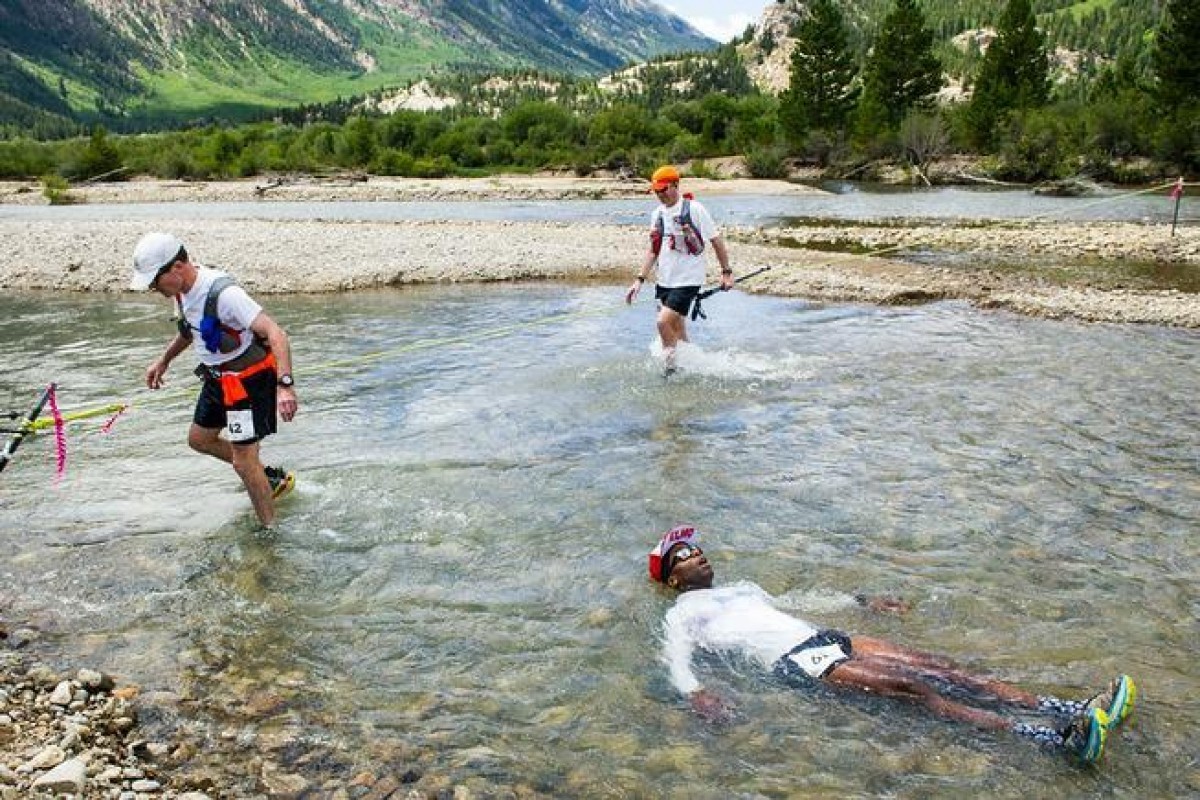
"It's Leadville, so it's all about getting to Winfield in good shape and then it's all about guts and strength and toughness on the way back," says Don Reichelt, one of the top contenders in the men's race this year. "If you've blown your quads coming down the back side of Hope Pass and then have to deal with the mental aspect knowing you have to go back up and over it, it can be a make-or-break moment of the race. It will be fun to see how it all plays out."
Here are a few things you should know about this year's Leadville 100.
The Course
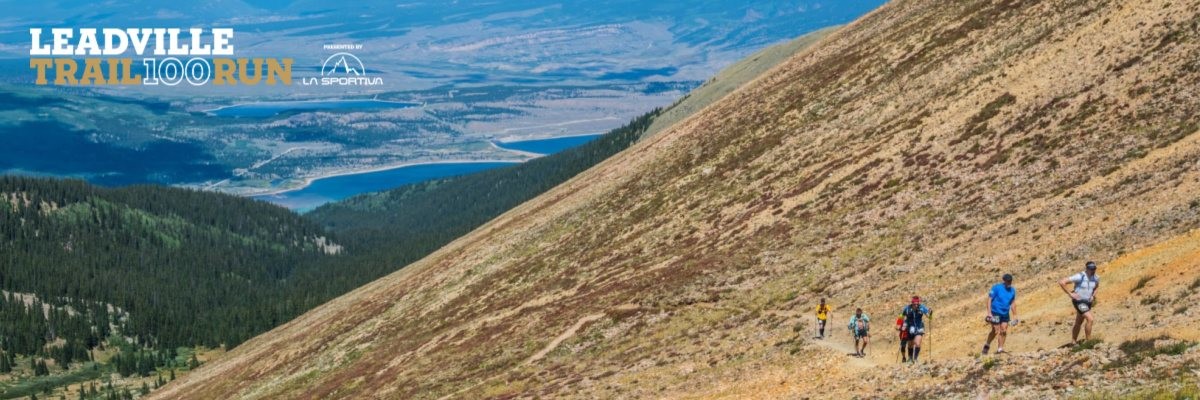
First things first, the race is officially 99 miles in length with 15,734 miles in elevation gain. The out-and-back course starts and finishes at an elevation of 10,160 feet in Leadville, dips down to a low point of 9,219 feet near Turquoise Lake and tops out at 12,532 feet on Hope Pass at the 45- and 55-mile points. It's a unique course with two rugged climbs in each direction (Hope Pass and Sugarloaf Mountain/Powerline) and a lot of flat, fast entirely runnable sections on dirt roads and paved roads, as well as epic singletrack sections on the Colorado Trail. The men's course record of 15:42:59 was set by Pikes Peak Marathon legend Matt Carpenter in 2005, while the women's course record of 18:06:24 dates back to Ann Trason's astonishing 1994 effort.
Women's Race Contenders
Among the top women in this year's race is North Carolina's Ashley Arnold, 34, who was the women's champion in 2013 and third-place finisher in 2010. Although she has raced sparingly since 2019, she's been staying in Leadville and Buena Vista for a few weeks and training on the course and should be a contender based on her experience and track record. Although she won three 50K races in 2019-2020, her strong third-place effort at the Power of Four 50K in Aspen on July 31 is a good testament of her fitness.
Vermont's Aliza Lapierre is coming off a fourth-place effort at the Catamount 50K (4:59:19) in June and a win at the Infinitus 88K race in May (9:33:16) in her home state, as well as a victory at April's Ultra Race of Champions 100K (10:18:57) in Virginia. Leadville local Annie Hughes, 23, has only been trail running since 2019, but she's won a 50-miler each of the past three years (Jemez Mountain, Indian Creek, Collegiate Peaks) and has a third (Bryce Canyon, 2020) and a first (Mace's Hideout) in her two 100-milers. She also has a few high-mountain FKTs to her credit, including her 61-hour, 19-minute effort on the 167-mile Collegiate Loop in 2020.
There are several other top women from Colorado, starting with Maddie Hart, 24, of Boulder, who won the 2019 Tahoe Rim Trail 100-miler, and Kim Dobson, 37, of Eagle, a six-time Pikes Peak Ascent winner who has won all three of the 50K/50-mile races she has entered since 2018, including the Crown King Scramble 50K (4:31:44) in Phoenix in March.
Blake Wageman, 36, who has raced consistently at 50K and 50-mile race for the past several years (including a runner-up showing at the Silver Rush 50 on July 10 in Leadville); Carrie Stafford, who was fourth in the Leadville 100 in 2019; Becky Kirschermann, 48, a three-time top-five finisher at the Run Rabbit Run 100; Tara Richardson, 30, who is making her debut at 100 miles after running strong at Aspen's Power of Four 50K race in late July; and Becky Lynn, 28, who has been a strong runner at 50K and 50 miles.
On August 20 at 1 p.m. MT, Trail Sister's founder Gina Lucrezi will be emceeing a "Ladies of Leadville" roundtable discussion at the race expo with a diverse group of seven of this year's Leadville 100 participants - Arnold, Dobson, Lapierre, Grace Sims, Kate Tsai, Jolene Sandoval and Sawna Guadarrama. The goal of the event, which will be broadcast via Instagram Live, is to provide insight and inspiration from their unique perspectives and various backgrounds, to celebrate and empower women trail runners of all abilities and to promote diversity within the sport and longer ultra-distance races.
Men's Race Contenders
Among the favorites in the men's race is Ian Sharman, 40, of Bend, Oregon, who is a four-time Leadville winner (2013, 2016, 2017), and the fastest finisher of the Grand Slam of Ultraunning (69:49:38 combined time for finishing Leadville, Wasatch, Western States and Vermont 100-milers in 2013). Sharman, who placed second in the McDonald Forest 50K on May 8 in Corvallis, Oregon, has numerous ultrarunning wins and podium finishes under his belt and a 16:22 personal best on the Leadville course.
Another top contender is Tyler Andrews, even though he hasn't raced this year and doesn't have a lot of ultra-distance race experience. However, the 31-year-old runner from Massachusetts has set some pretty serious FKTs on high-altitude trails in Chile, Ecuador and Peru as part of a journey he dubbed the Los 10 FKT Project. He's also a two-time U.S. Olympic Trials Marathon qualifier who owns a 2:15:52 personal best for 26.2 miles on the roads.
Colorado's Don Reichelt, 35 brings a lot of very good ultrarunning race experience with him, especially from the past couple of years. Most notable are a third-place finish at the Badwater 135 in 2018, a win at the Lean Horse 100-miler in South Dakota in 2019 and a blazing 13:16 third-place effort at the Tunnel Hill 100-miler in Illinois last November. Reichelt has continued to improve into his mid-30s and lives in Fairplay, Colorado, and regular trains in the mountains around Leadville.
Cody Reed, 30, of Mammoth Lakes, California, has said on Instagram he'll be gunning for the win in a course-record time. This is the third year in a row Reed has been registered for the Leadville 100 but he got hurt in 2019 and the race was canceled last year. After recovering from a knee injury in 2019, he went on to win the Ultra Trail Cape Town 100K in South Africa. He has a lot of good to very good results since 2016 and certainly should be a runner to watch. He tuned up for the race by winning the six-day TransRockies Run.
Although he has vowed to run more conservatively than in his previous five starts, Anton Krupicka is not only a Leadville 100 legend but also an icon in the sport of ultrarunning. The two-time Leadville winner (2006, 2007) was trail runner's first social media star, and, although he admits he doesn't love the gratuitous attention he can attract, he's still a legit athlete and should be among the top five in the men's race based on his stout summer of training on his feet and on his bike.
Other runners to watch include David Kilgore, 29, New York City, a former University of Colorado runner and 2:27 marathoner who won the 340-mile The Speed Project multi-day race from Los Angeles to Las Vegas in May; Hannes Gehring, 34, of Denver, who set the Never Summer 100K course record (11:47:06) and placed sixth at the Run Rabbit Run 100-miler in 2019; Jackson Cole, 25, of Alamosa, Colorado, who has run several fast 50K races but hasn't raced anything longer than 38 miles; and Adrian Macdonald, 32, from Fort Collins, Colorado, who won the Antelope Island 50-miler in Utah this spring.
Leadman/Leadwoman runners and savvy veteran racers
There are 67 athletes remaining in the Leadman/Leadwoman challenge (of the original 109 starters back in June), but each one has to complete the Leadville 100 under 30 hours to become an official finisher. The Leadman/Leadwoman competitors have already completed at least four of the five Leadville Race Series events: the Leadville Trail Marathon, Silver Rush 50 Silver Rush run and/or mountain bike (competitors can chose one or both events), Leadville Trail 100 Mountain Bike Race and the Leadville 10K. Rodrigo Jimenez is currently in 8th in the standing and will start in dead last on Saturday, competing in the Back of the Pack challenge to raise money for the Leadville Trail 100 Legacy Foundation.
There are four runners over the age of 70 entered in the Leadville 100: Gordon Hardman, 70, Chuck Cofer, 70, and Marlin Weekley, 70, and Marge Hickman 71. Hardman has been running ultras since the late 1980s, has three previous Leadville finishes to his credit (1989, 1998, 2010) and is one of only 23 runners two have completed the Grand Slam of Ultrarunning twice (1989, 1998). Weekley has apparently only been running ultras in his 60s, but has more than two dozen race finishes over the past seven years. Cofer has 12 previous Leadville 100 finishes dating back to 1996, but is back for the first time since 2015. Hickman, a longtime Leadville resident, is one of the most accomplished women runners in the race's history. She's a 15-time Leadville 100 finisher who won the women's race in 1985 (26:57:50) and finished as the runner-up four times (1984, 1986, 1991, 1995). She also wrote an authoritative book on about the race.
Robbie Belanger's Endurance Feats
Robbie Belanger is a plant-based endurance athlete known for running across the U.S. in 75 days in 2019 and setting a world record for the Central Park Loop Challenge (16 laps, just under 100 miles) during the park's official opening hours. Most recently, he created a new challenge for himself focused on exploring Colorado and his affinity for the Leadville Race Series. In 2019 he moved to Denver and did the Silver Rush 50. In light of COVID, he started thinking about what he could do locally, within Colorado, so came up with the Colorado Crush Challenge, using the Leadville Race Series as a framework for his larger effort. His challenge started with the Leadville Marathon on June 19, followed by running the Colorado Trail in 11 days, and then completing the the Silver Rush 50 on July 10. Between Silver Rush and the Leadville 100 run, he reached the summit of all 58 of the Colorado 14ers, completing that epic feat on August 16 when he reached the peak of Missouri Mountain. That's 58 peaks in 38 days with nearly 300,000 feet of vertical gain.
by Trail Runner Magazine
Login to leave a comment
Leadville Trail 100 Run
The legendary “Race Across The Sky” 100-mile run is where it all started back in 1983. This is it. The race where legends are created and limits are tested. One hundred miles of extreme Colorado Rockies terrain — from elevations of 9,200 to 12,600 feet. You will give the mountain respect, and earn respect from all. ...
more...Kilian Jornet falls short of Pikes Peak Marathon record as Maude Mathys obliterates women’s mark set last year
Catlan runner ran 3:27:39, nearly 11 minutes shy of Matt Carpenter’s record, which has stood for 26 years
One of the most revered records in American mountain running has withstood a challenge from this generation’s greatest ultrarunner.
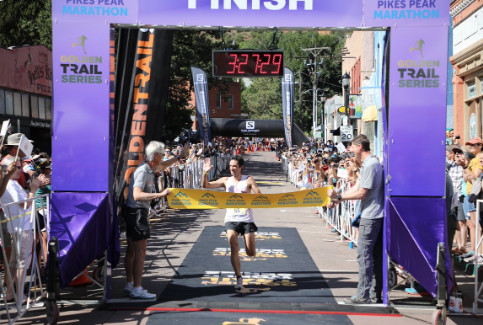
Despite an early fast pace, Catalan mountain running superstar Kilian Jornet fell short of breaking Matt Carpenter’s ascent and overall course record in the 64th edition of the Pikes Peak Marathon on Sunday, finishing in 3 hours, 27 minutes, 29 seconds — nearly 11 minutes slower than Carpenter’s 3:16:39, set in 1993.
But Swiss ultrarunner Maude Mathys still provided reason to celebrate. Mathys won the women’s division in 4:02:45, crushing the course record set by Megan Kimmel last year in 4:15:04.
Carpenter’s course record has stood for 26 years. Jornet came to the Pikes Peak Marathon as part of the Salomon Golden Trail World Series, a collection of some of the top mountain races in the world, racing in the hopes of breaking the record after also falling short in 2012.
But he said afterward that his legs felt heavy during his morning warmup. He set a course record at the Sierre-Zinal trail race in Switzerland just two weeks ago, but he said that the short turnaround wasn’t a factor in his race today.
At the halfway mark — the summit of Pikes Peak — the record quest appeared to be in jeopardy. Jornet summited in 2:09:15, more than eight minutes behind Carpenter’s 2:01:06 ascent record, which Carpenter set in the same race he recorded the overall record.
For Carpenter, now 55, Pikes Peak is and remains his domain. He has won the marathon 12 times and the ascent-only run — held the day before the marathon — six times. He has lived in Manitou Springs for years and trained frequently on the Pikes Peak course, learning how to handle the altitude while navigating the flats, switchbacks and steep sections.
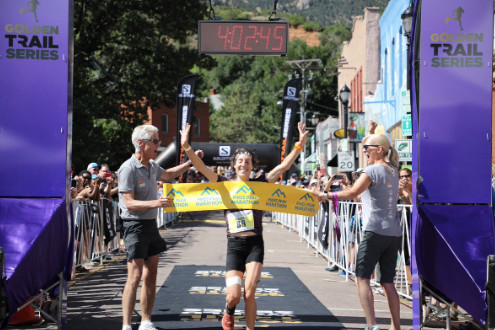
In recent years, trail running has exploded in popularity throughout the U.S. and the world, ushering a sport from the fringes of distance running to the mainstream. That has brought a new era of young, accomplished runners who have broken and rebroken records and so-called fastest-known times — thought to be untouchable. Despite the onslaught, Carpenter’s records at both Pikes Peak and the Leadville 100 still stand years after they were set.
The Pikes Peak Marathon course starts in Manitou Springs at 6,300 feet, before climbing more than 7,700 feet to Pikes Peak’s summit at 14,115 feet. The race is the second-oldest marathon in the United States and was the first in the U.S. to record an official women’s finisher.
Just past the first mile, Jornet was already leading the pack by a few steps. Just before five miles, he had built up his lead to more than 90 seconds, on pace to hit the summit in under two hours. But his legs soon caught up with him, and he slowed, summiting in 2:09:15.
Jornet had run this race in 2012, winning in 3:40:26. But he also competed with a heaver race schedule then.
Pikes Peak is one of only three races Jornet will do all year. Already, Jornet holds the course record counterclockwise and clockwise for the Hardrock 100, one of Colorado’s other esteemed ultra runs that starts and finishes in Silverton and loops through Ouray, Telluride and Lake City in the San Juan Mountains, forcing runnings to ascend some 33,000 feet over 100.5 miles.
Login to leave a comment
Pike's Peak Marathon
A Journey to the Top and Perhaps Back The Pikes Peak Ascent® and Pikes Peak Marathon® will redefine what you call running. Sure, they start out like a lot of races on Any Street, USA. But your first left turn will have you turning in the direction of up! During the next 10 miles, as you gain almost 6,000...
more...Kilian Jornet crushed Sierre-Zinal, and has now set his sights on Pikes Peak
Ten years ago, a 21-year old Catalan trail runner showed up in the end-of-the-valley village of Zinal, in Switzerland’s Valais Canton, not far from the Italian border. He had a list with him.
“It was just a sheet of paper with names of races,” says Chamonix, France-based trail-running author Alain Bustin. “It wasn’t races he wanted to win, or course records he wanted to break. All he wanted to do was take part. Sierre-Zinal was on the list.”
Even then, Sierre-Zinal was iconic. The 31-kilometer race that started in the valley village of Sierre and finished in Zinal was already established as one of the most competitive trail races in the world. And that year, the young runner won.
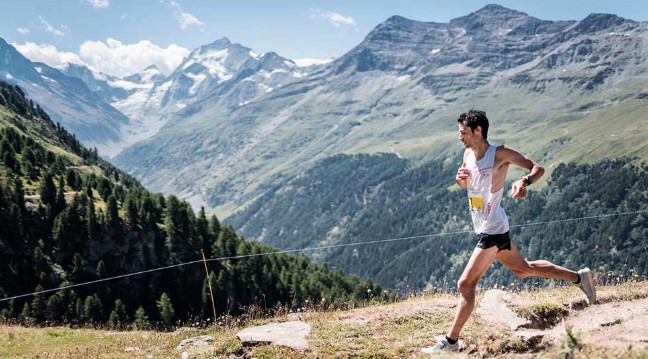
A few weeks later, he won the 171-kilometer Ultra-Trail du Mont-Blanc.
That runner, of course, is Kilian Jornet. And last weekend in Zinal, he won “S-Z” for a seventh time, further surpassing Mexican runner Richardo Meija’s five wins between 1998 and 2005. And this time Jornet did something that no one had done in 16 years. He broke one of trail-running’s most-coveted course records with a time of 2:25:35—not by seconds, but by 3 minutes 37 seconds.
The 2:29:12 record had been held all those years by the New Zealander Jonathan Wyatt, now 46, indisputably one of his generation’s greatest mountain runners. Starting more than two decades ago, Wyatt began racking up records from the Alps to the United States, at races as diverse as Switzerland’s Jungfrau Marathon (2:49:01 in 2003) and New Hampshire’s Mount Washington Road Race (56:41 in 2004.) Both are still course records.United States runner Jim Walmsley had a notable success, finishing third in his first running of the famed course, in a time of 2:31:52—a result that in any other year would likely have had him breaking the finish-line tape.
While Sierre-Zinal is arguably one of the most competitive trail races in the world, and much of the attention focusses on the elite runners, it has a wide and diverse following. This year, more than 5,000 runners took part. Recreational runners started five-and-a-quarter hours earlier, a special aspect of the race-day schedule that allows recreational runners to watch elites arrive, several hours after most of them have crossed the finish line.
Nicknamed “The New York Marathon of the Alps,” the race’s rich history makes for a special day for runners from around the world. It’s a vibe that was felt by runners like Mike Ambrose, formerly the North American Marketing Manager for Salomon, and now based out of the company’s world headquarters in Annecy, France.
“Running across that ridgeline with the flowy singletrack, I felt the legends before me,” says Ambrose. “That’s the first time ever in a race that I was putting myself out there with the greatest and the pioneers of the sport. Maybe I wasn’t running at the same speed, but I was part of the history. I actually felt that energy. “
For Jornet, there are few records left to shatter. At age 31, he has Fastest Known Times from the Matterhorn to Mount Everest. He has won trail running’s most prestigious races, some of them multiple times, with course records around the world. It’s hard not to imagine that Jornet might begin to turn his attention to other projects. With Skyrunning Champion Emelie Forsberg, he now has a five-month-old baby—and an energetic labradoodle, Maui, to boot.
As he watched Jornet from a jumbo screen not far from the Sierre-Zinal finish line, Bustin, a longtime acquaintance of Jornet’s, was in a contemplative mood. “Kilian, he’s not just special because of his records at Sierre-Zinal or the UTMB,” he said. “He’s broken mountaineering records and ski alpinism (ski mountaineering) records, too.”
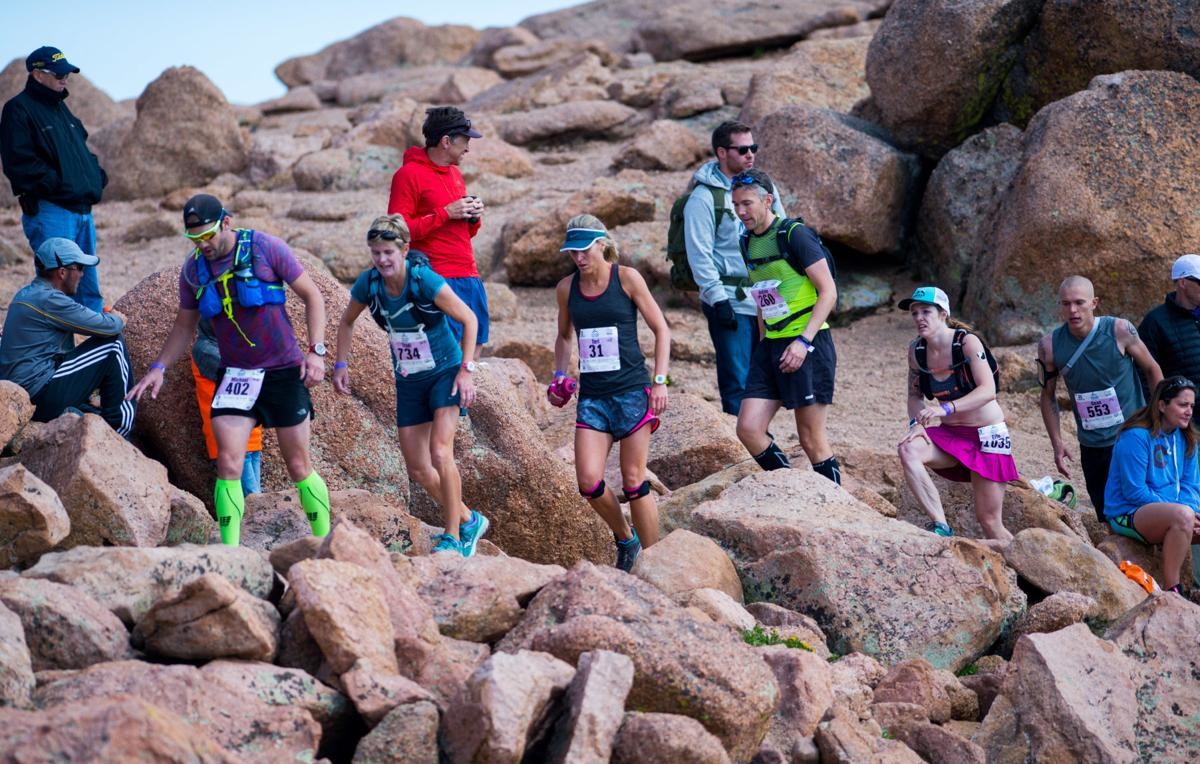
Bustin paused with thousands of other onlookers, as race officials announced to the crowd that Jornet was now 20 seconds ahead of Wyatt’s historic course record. On the screen, Jornet looked fluid and in control, calmly, steadily, smoothly “running the tangents” along a rocky section of the course.
“He’s a fantastic guy, with a great mentality about mountain sports. Maybe he’s about to say to the young runners, ‘Hey guys, I’ve done my time. Now it’s up to you,’” added Bustin. Taking in the weight of what he had just considered out loud—that the world’s greatest trail runner could soon be winding down his long stretch of highly competitive racing days—he looked back up to the screen, saying to no-one in particular, “He has nothing to prove to anyone.”
Well, maybe not quite. There is, arguably, at least one notoriously difficult-to-beat record remaining: Colorado’s Pikes Peak Marathon. In 1993, Matt Carpenter set a confoundingly fast course record there, with a time of 3:16:39. On August 25, Jornet will be there. It’s hard not to imagine he wouldn’t like to cross the tape with a time quicker than Carpenter’s. The trail-running world will be watching.
Login to leave a comment
Pike's Peak Marathon
A Journey to the Top and Perhaps Back The Pikes Peak Ascent® and Pikes Peak Marathon® will redefine what you call running. Sure, they start out like a lot of races on Any Street, USA. But your first left turn will have you turning in the direction of up! During the next 10 miles, as you gain almost 6,000...
more...Boulder’s Ryan Smith wins 2019 Leadville 100 with consistent second-half pacing
Boulder’s Ryan Smith won the Leadville 100 trail run on Saturday night thanks to consistent second-half pacing that left his rivals unable to respond. It was the biggest win of his ultrarunning career.
The Boulder-based runner, who came to the United States from the United Kingdom and works full-time a software engineer, was greeted at the finish by his wife and almost 2-year-old daughter. He turned 40 years old this year.
“There’s just a lot of running in the race,” Smith said, referring to the long flat sections along much of the course. “It really favors a flat runner rather than a mountain runner, and I typically do a lot of mountain stuff.”
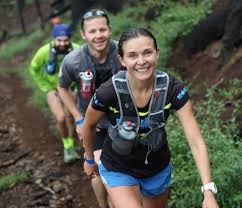
His win — in 16 hours, 33 minutes, 25 seconds — was far from expected. Smith was not among the pre-race favorites to win, and he wasn’t feeling well leading into the Twin Lakes aid station near the 40-mile mark. But at the turnaround at Winfield, he held his pace steady, averaging around 10 minutes per mile for the rest of the race.
“Always be closing!” his last pacesetter, Clare Gallagher, herself a Leadville 100 winner in 2016, yelled to him after his win. She was referring to Smith’s penchant for strong finishes, and to the casual observer, it might have seemed that Smith was surging. But consistent pacing that late in a race — he averaged 9:58, 9:53, 9:59, 9:54, 10:01, 9:55, 9:54 for all of the second half checkpoints — is remarkably difficult to achieve.
His win came after Jared Hazen, the runner-up to this year’s Western States 100, set out a blistering early pace, intent on breaking the course record of 15:42 set by Matt Carpenter in 2005. Late Saturday morning, while racing back toward Twin Lakes, he told a Denver Post reporter along the trail that he had dropped out and “needed to get to an aid station.” He had turned around before the Winfield aid station — the halfway point of the course.
The Leadville is infamous for seducing runners into racing too hard too early, with flat fields and trails before turning into a punishing climb to 12,600 feet over Hope Pass.
For the women, Magdalena Boulet of Oakland, Calif., finished in 20:18:07 in her first Leadville 100. Boulet, who won her first-ever 100-miler in 2015 at Western States and was a U.S. Olympic marathoner in 2008, said she was inspired to run at Leadville after crewing for her boss at GU Energy Labs a few years ago. She had acclimatized at altitude for only two weeks before Saturday’s run. Boulder’s Cat Bradley was the second woman to cross the finish line in 20:45:48.
Login to leave a comment
Leadville Trail 100 Run
The legendary “Race Across The Sky” 100-mile run is where it all started back in 1983. This is it. The race where legends are created and limits are tested. One hundred miles of extreme Colorado Rockies terrain — from elevations of 9,200 to 12,600 feet. You will give the mountain respect, and earn respect from all. ...
more...

